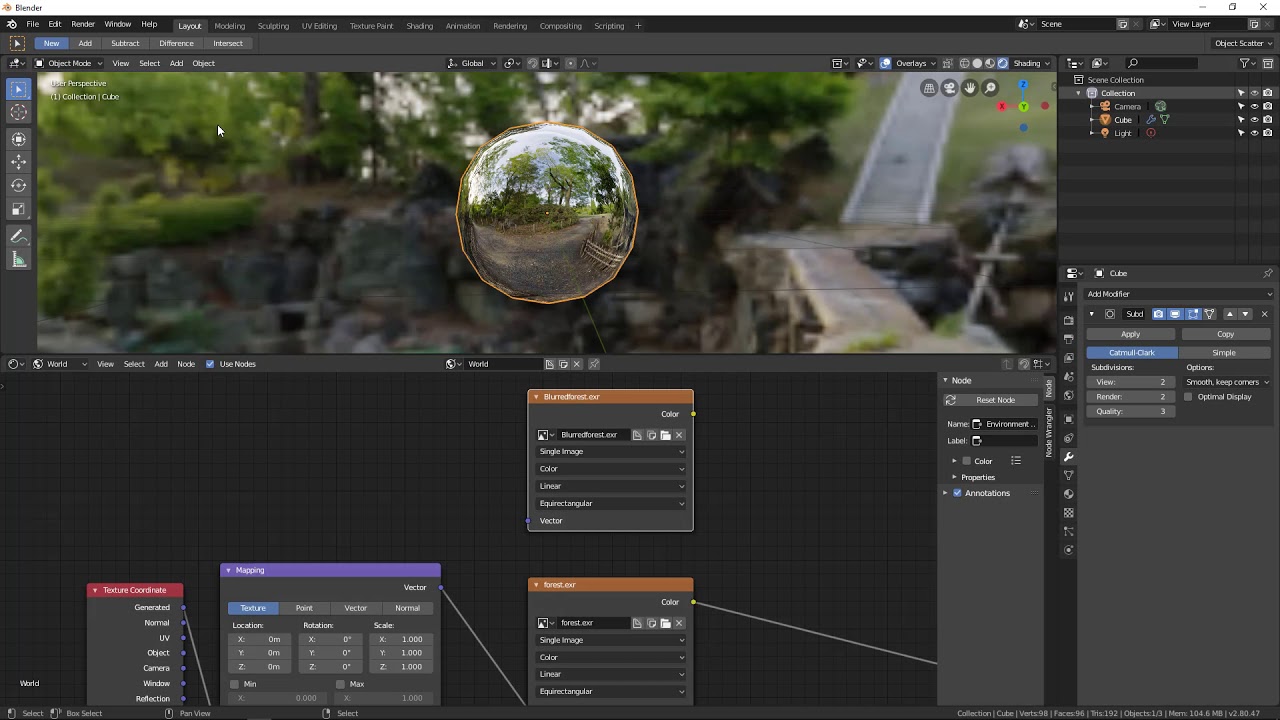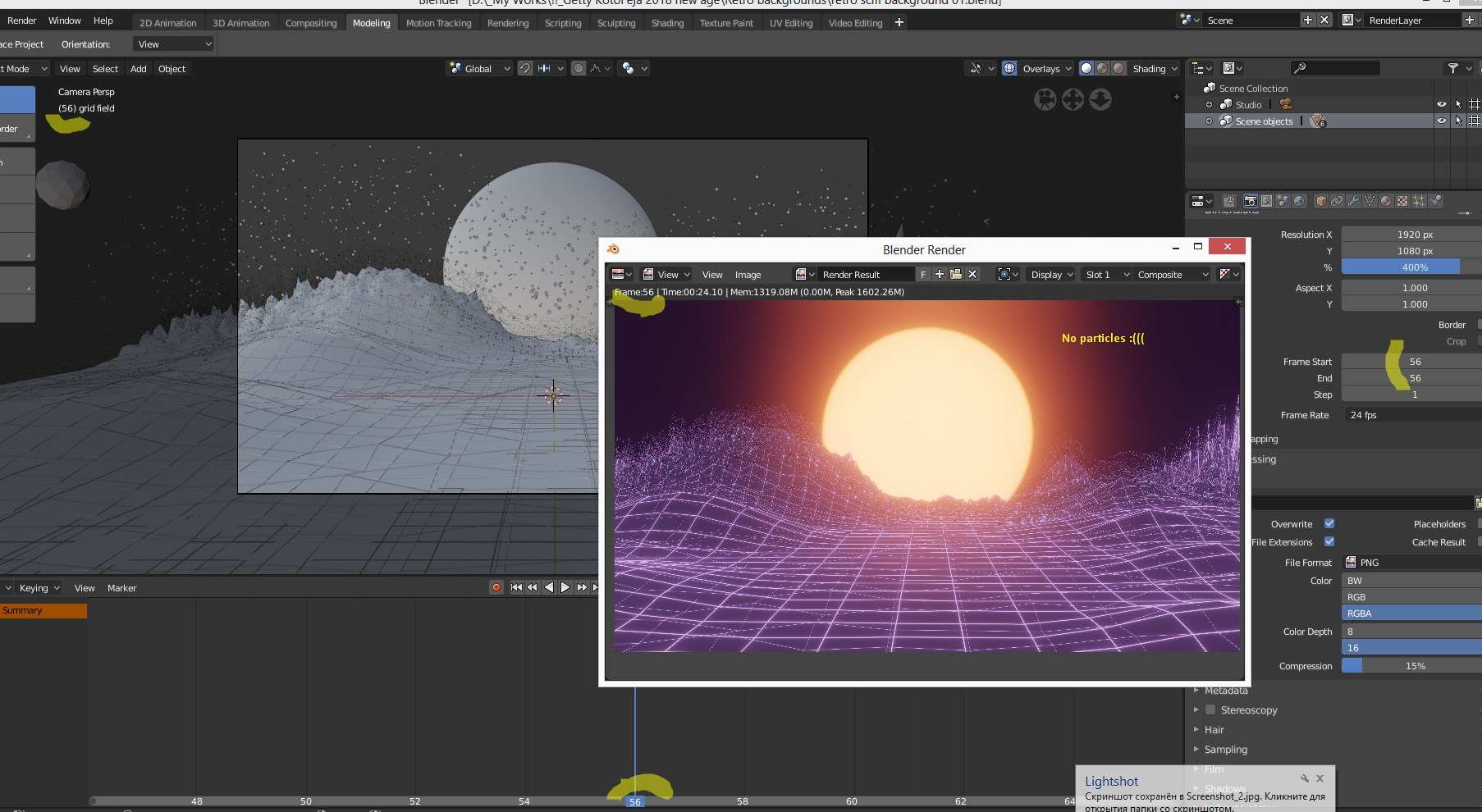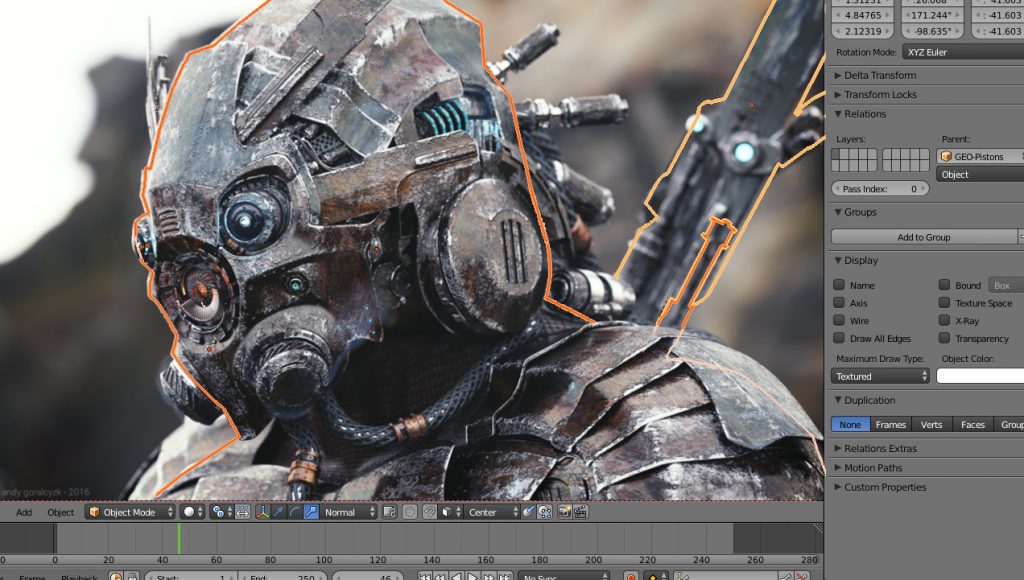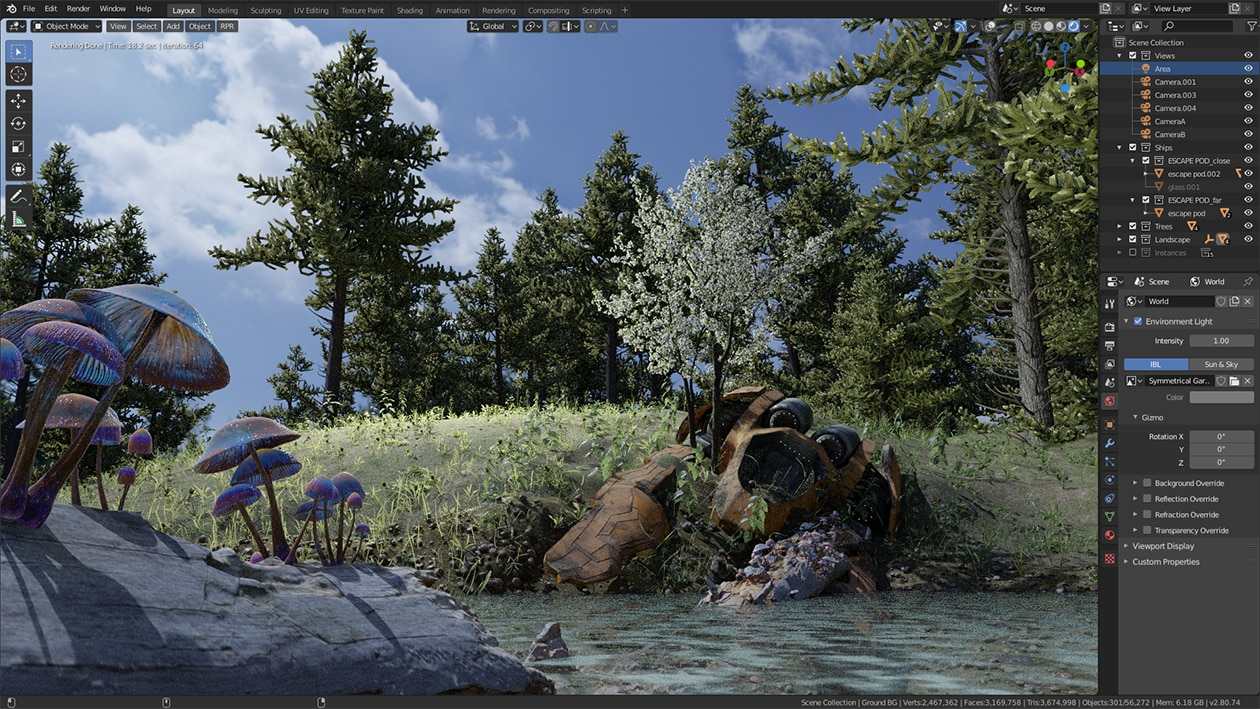Render Street How to Upload Image Sequence

Whether using the video sequencing editor or the compositor, the post-obit guide explains how to properly render and complete an animation in Blender 2.viii onward, too as the differences between rendering as a movie file and as an epitome sequence (rendering each frame every bit a still paradigm).
When you're finished with your projection and ready to render, switch to the Render Properties subsection and select your rendering engine (Cycles, Eevee, or third-party engine). Tip: Pay close attention to the engine you choose when setting up the lighting in your projection. Switching engines tin drastically alter the lighting setup of your scene.
Irresolute the settings in the Operation subsection volition aid y'all with the rendering process. There, you lot will notice the Threads Way setting. It detects the number of CPU threads (virtual CPU cores) your workstation has and how many to use for rendering. By default, its set up to automobile-detect just can be inverse to a fixed number, which allows you to manually select how many threads Blender will employ during rendering.
In the Output Properties console, y'all tin can ready the following:
- Resolution of the animation
- First and end frames for the blitheness
- Frame charge per unit
- Directory where the rendered animation will be saved
The File Format dropdown menu allows yous to cull a movie format or an prototype format. As information technology suggests, your animation will be rendered as a unmarried movie file when choosing a movie format, while each frame will exist rendered every bit an private image when choosing an prototype format. If your blitheness has 150 frames, for example, you would end upwardly with 150 images rendered individually.

Each method has its own share of advantages and disadvantages merely image sequencing carries the most versatility when comparing the 2. With prototype sequencing, y'all tin stop and restart the rendering process wherever you accept left off. After rendering the private images, you tin then utilise the internal video sequencer to catechumen the images into a unmarried movie file. Considering this conversion is quick, it's an effective and convenient way to convert the images into more than one movie file format.
Too, by rendering frames as private images, you can augment them further by post-processing the images in the compositor before converting them. That said, 1 disadvantage with rendering individual images is that information technology takes a little extra work to convert them.
If you're confident in your scene and your machine, yous tin of course return information technology directly as a movie file. If information technology seems to accept longer than initially anticipated to render as a moving-picture show file, then consider rendering it every bit an image sequence instead.
If you select the FFmpeg video format in the Output Properties sub-tab, an encoding section volition go available that lets you select more options. You can select a video codec and a container for your video. If your project has audio, you tin can also select an audio codec.
- Video Codec: The video codec encodes and also compresses the project's rendered images into a format that can be stored or transmitted to another estimator.
- Sound Codec: If your project has audio, the audio codec should be used to encode and shrink the audio also.
- Container: A container is what contains your video and audio. Container files have file extensions that will play with your video role player, such as AVI, MP4, and MKV.

One time you lot take selected the codecs and container, you're ready to render your animation. Open up the Render carte du jour in the toolbar and select Render Blitheness (F12). Once complete, the file will be available in the output directory you take selected.
Alternatively, using an prototype file format such as BMP, JPG, or PNG will allow you to render out your scene equally an image sequence. In terms of production, it's much ameliorate to do this instead of rendering out as a pic file. Because rendering as a movie file can't exist stopped or paused during the return, and there's a chance that your file can become corrupted, you may have to restart the entire render from the commencement.
Rendering as an image sequence allows you to experiment with unlike formats and settings earlier encoding to video. You tin also restart the rendering procedure from your last successful frame in the event of a crash.
Once you have set your parameters, start the rendering procedure from the Render menu in the toolbar and select Render Blitheness (F12). To play the animation, go back to the main Blender window, and select View Render Animation from the Return menu.
By using the video sequencer, you can catechumen your rendered images into a playable movie file. Once within the sequencer, go to Add (Shift+A) and select the Image Sequence option. Navigate to the directory where your files are stored and click "Add."

Click the Strip tab to set the length of your blitheness. The file format of your output can too be gear up there.
Every bit mentioned before, if you select the FFmpeg video format, then an encoding department volition become bachelor where you lot tin select more than options, including the video codec, audio codec, and container.
In the post-processing section, brand sure that the sequencer option has been selected. If y'all plan to render the animation again, and yous have a scene strip set upward and the sequencer is activated, Blender volition convert the strip into the specified file format when you render the blitheness.
Source: https://irendering.net/how-to-render-blender-animations-movie-image-sequencing/
Post a Comment for "Render Street How to Upload Image Sequence"